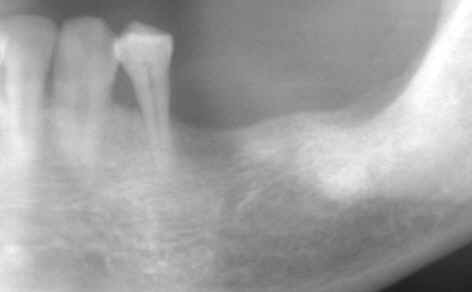 |
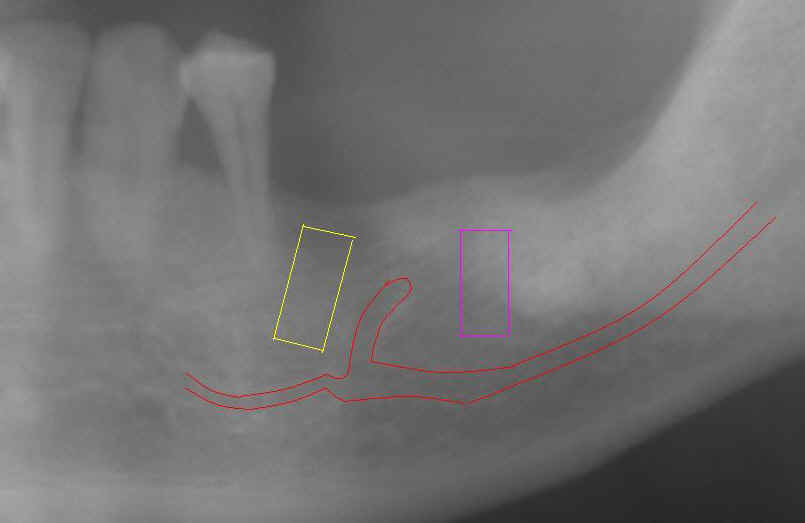 |
|
Fig.1 |
Fig.2 |
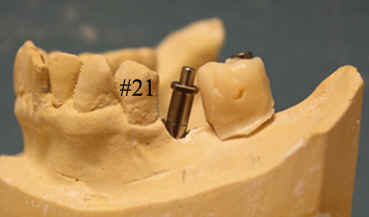 |
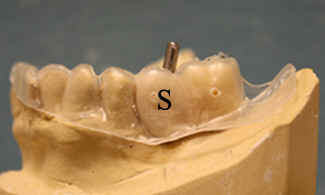 |
|
Fig.3 |
Fig.4 |
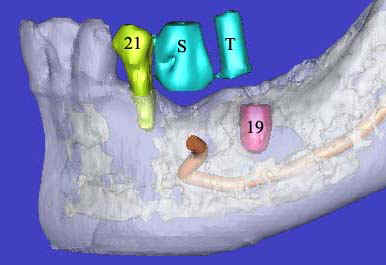 |
|
|
Fig.5 |
Fig.6 |
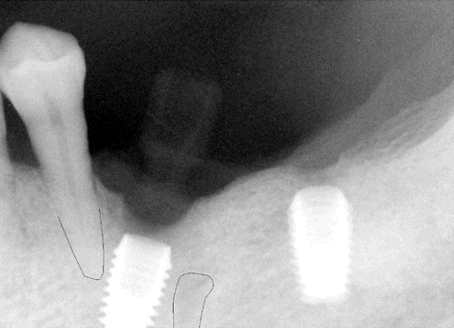 |
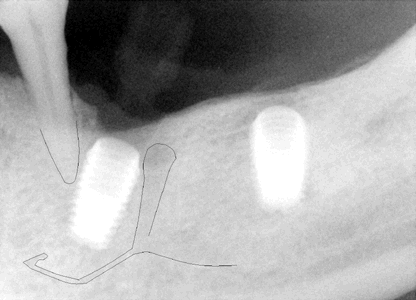 |
|
Fig.7 |
Fig.8 |
 |
 |
|
Fig.1 |
Fig.2 |
 |
 |
|
Fig.3 |
Fig.4 |
 |
|
|
Fig.5 |
Fig.6 |
 |
 |
|
Fig.7 |
Fig.8 |
Dental Education Lecture: CT Exam Before Implant Placement
Success of implant depends on the density and size of jaw bone. The higher the density, the more stable the implant is. The larger the jaw bone, the larger and longer implant can be placed. Inside the lower jaw is an important nerve. Before surgery, we need to take X-ray, but it does not show anatomy very well and it is two dimensional. Mr. Wu needs two implants on one side of the bottom jaw (Fig.1). We have to use a special program to trace the nerve (red line in Fig.2) without much precision. Anyway, we plan to place two implants as shown in yellow and pink boxes in Fig.2. We need to design the size and direction of the yellow implant so that it will not damage the root tip of the neighboring tooth or nerves on the other side or on the bottom. The margin of error is not large. We have to turn to more advanced technique: CT (computerized tomograph).
To make CT more useful, we need to make a stent. First, we do preliminary design on model using metal rods and tubes in Fig.3. The implant next to the natural tooth (#21) should be side way as suggested by X-ray in Fig.2. Second, we make the stent using resin containing barium sulphate. As well known, we should take barium before X-ray for the stomach and guts. The patient wears the stent (S in Fig.4; sort of like a denture) when he takes CT scan.
What CT show is crystal clear. 19 is an implant previously placed. Below it is the tortuous nerve we should avoid. T is the metal tube we used to place the implant of #19; S (stent) is the guiding device for placing an implant next. Immediately before surgery, we trace the future implant again with precision as a black box in Fig.6. A thinner nerve is also traced in red lines below the implant.
With more information obtained from CT (not shown here), we place the largest and widest implant according to his condition without damaging neighboring tooth or nerves (Fig.7,8). Therefore, we need to take CT for difficult cases of implants.
Xin Wei, DDS, PhD, MS 1st edition 11/27/2009, last revision 09/28/2012